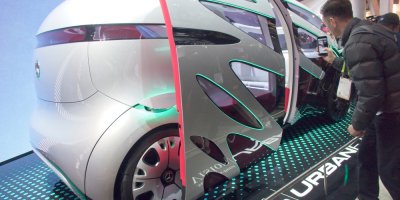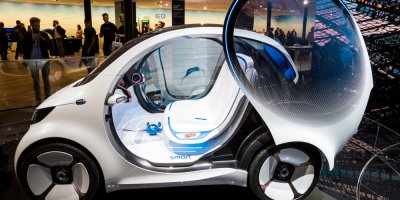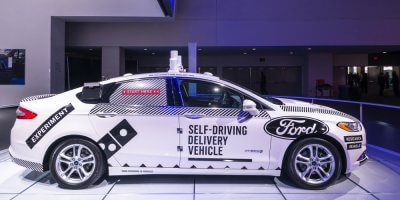
Autonomous vehicles are just around the corner. Source: Shutterstock
The insider’s track on technology developments in the automotive industry
TECHNOLOGY is no stranger to the automotive industry.
Cars have been using onboard computers or Engine Control Units (ECUs) since the 1970s and over the past few decades, have steered the industry towards more digital apparatuses, appliances, and applications than any other.
Today, most cars are engineering marvels, complete with wireless sensors, connected dashboards, and onboard computers with operational and entertainment value. Some even have digital twins.
Having said that, breaking into the promised digital era with self-driving vehicles has been a challenge for most companies in the automotive industry — because it simply involves factors that are out of their control.
But nobody is giving up. Not even close. Technology in the automotive industry has been an exciting topic and self-driving vehicles is a concept that everyone wants to try their luck with.
Being among the first cohort of automakers to bring self-driving vehicles to the road will be game-changing, and none of the established players want to give that up. Especially after studies have shown that traditional automakers have a natural advantage over startups as they already have the customer’s trust.
Is there any real progress being made?
Truth be told, given all the headlines, consumers and enthusiasts often wonder if there’s any real progress — because everyone makes big announcements but nothing really changes.
Customers are bored of whiling away their time in traffic, wasting precious hours that could be spent working, communicating, resting, or even shopping.
Most recently, a US-based publisher claimed that its research found more than 1,400 self-driving vehicles being tested by over 80 companies in the US alone.
The number doesn’t look so exciting in the APAC because progress is fragmented, but pilot programs are being rolled out across key cities in the region.
In fact, Singapore — a country that struggles to find space for new developments — has built a small town (2 hectares) just to test self-driving vehicles.
Collaborations with companies such as Volvo have helped the country deploy autonomous electric busses as well, proving to the world that its regulators aren’t in a mood to take the foot off the accelerator till they drive the country into the self-driving era.
Resources permitting, other countries in the APAC have followed suit as well. China, of course, is in a race of its own. Residents of Guangzhou in China often become enthusiastic spectators of self-driving vehicle tests being conducted in private parking lots and on public roads.
China has also recently announced that it has opened the world’s first self-driving 5G bus line for trials in Zhengzhou City in the Henan Province.
Wait, do we even have the technology for self-driving cars?
Yup, we do. We already have the technology for self-driving cars. Sure, headlines that say these vehicles often fail to recognize people of color cause panic, but that’s not a big challenge to solve.
According to experts, that’s a data problem. The solution is simple — but needs all hands on deck.
Training AI for self-driving cars needs data (in this case, images of people and animals of all kinds) that is tagged appropriately. Once that data is tagged and prepped to be fed to AI models, the “cars” will learn quickly.
Obviously, once this is ready and can be proved by any automaker to relevant regulators, beyond any reasonable doubt, the licenses and permissions will roll out almost instantaneously.
Speaking of technology, some people believe the world is waiting on quantum computing and 5G to launch self-driving cars. There’s no truth to that.
The impact of quantum computing and 5G on self-driving cars
Quantum computing is expected to make managing traffic seamless in a world with self-driving cars (or even a world with a mix of self-driving and traditional cars).
That’s as far as the convenience goes. Managing traffic via quantum computing is a big area of interest for regulators across the world, however, it’s not a chicken and egg situation or hindering the launch of self-driving cars in any way.
As far as 5G is concerned, passengers of self-driving cars will benefit from 5G technology much more than self-driving cars themselves.
Passengers of self-driving cars will be able to use 5G for video entertainment and communication via virtual reality headsets, making their drive more comfortable and enjoyable — 5G will also create more opportunities for businesses looking to sell (e-commerce) to passengers in self-driving cars by allowing for product demonstrations in vivid detail.
Practically speaking, 5G will also make it possible to tele-operate the autonomous vehicle — but that theoretically beats the purpose of building a self-driving car in the first place.
Have we solved the cybersecurity problem?
The story wouldn’t be complete if we didn’t discuss cybersecurity — especially after seeing hackers gaining control of “connected cars” (very early iterations of self-driving cars) in The Fate of the Furious and driving them out of parking lots and onto the streets.
Truth be told, there’s no guaranteed way to fix the cybersecurity concerns associated with self-driving cars.
So long as the cars are connected to the internet, they can be hacked. It’s the same with anything that is connected to the internet — your phone, home camera, fridge and coffee machine, and now, even your car.
Automakers need to make sure that they allocate dedicated resources to keep systems secure and update firmware and software on their vehicles as soon as threats are discovered.
The reality is that cybersecurity is going to be an ongoing effort in the world of self-driving cars. In fact, those that can earn the confidence of customers might even gain a competitive edge in the market and command a premium just because of the overall peace of mind it brings.
READ MORE
- Ethical AI: The renewed importance of safeguarding data and customer privacy in Generative AI applications
- How Japan balances AI-driven opportunities with cybersecurity needs
- Deploying SASE: Benchmarking your approach
- Insurance everywhere all at once: the digital transformation of the APAC insurance industry
- Google parent Alphabet eyes HubSpot: A potential acquisition shaping the future of CRM










